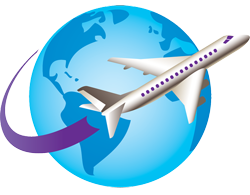The volcanic islands of the Comorian archipelago have been called the “perfumed islands” for their fragrant plant life and are known for their great scenic beauty. The four main islands of the archipelago—“four small effervescent stones, wedged between the nearby large red island [Madagascar] and the Mozambican coast,” in the words of the Comorian writer Sitti Saïd Youssouf—combine African, Arabic, Malagasy, and French influences and were once important in the significant Indian Ocean trade between East Africa and Asian ports such as India and Japan.
Grande Comore is the largest and loftiest island. It rises near its southern end in an active volcano, Mount Karthala, which, at 7,746 feet (2,361 metres), is the country’s highest point. Karthala has erupted more than a dozen times in the past two centuries. The capital, Moroni, lies in the shadow of the volcano along the island’s west coast; the town of Mitsamiouli lies on the north coast. North of Mount Karthala is a wide plateau averaging 2,000 feet (600 metres) in elevation. The surface is generally rocky and the soils shallow. There are no perennial streams, and the coast, without large inlets, is ill suited for shipping.
Mohéli is the smallest island of the group. Composed largely of a plateau that averages about 1,000 feet (300 metres) in elevation, the island ends in the west in a ridge reaching more than 2,600 feet (790 metres) above sea level. The valleys are generally fertile, and the hillsides are covered with thick forests. A strong sea swell hampers shipping. Mohéli’s chief towns are Fomboni on the northern coast and Nioumachoua in the southwest.
Anjouan is a triangular island rising centrally in a volcanic massif (Mount Ntingui) that reaches an elevation of about 5,200 feet (1,580 metres). Although the soil cover is good, much erosion has occurred, and many areas are no longer arable. There are no good natural harbours. Moutsamoudou, on the northwest coast, is the chief town; its port facilities were modernized in the mid-1980s.
Southeast of Anjouan lies Mayotte, the oldest of the four islands. It is claimed by Comoros (a claim recognized by the United Nations General Assembly), but its status is unsettled, and it continues to be administered by France.

A tourist visa will be issued at Malé International Airport provided that the visitor satisfies all of the following conditions:
To enter the Maldives no pre-arrival visa is required.
A thirty day free visa is issued on arrival for all Nationalities, provided:

The 2010 maternal mortality rate per 100,000 births for the Comoros is 340. This is compared with 225.3 in 2008 and 449.9 in 1990. The under 5 mortality rate, per 1,000 births is 105 and the neonatal mortality as a percentage of under 5’s mortality is 35. In the Comoros the number of midwives per 1,000 live births is 9 and the lifetime risk of death for pregnant women 1 in 71.
Life expectancy at birth was estimated at fifty-six years in 1990, up from fifty-one years in 1980. The crude birthrate was forty-eight per 1,000 and the crude death rate, twelve per 1,000 according to 1989 statistics. All three of these figures were close to the averages for sub-Saharan Africa. The rate of infant mortality per 1,000 live births was eighty-nine in 1991, down from 113 in 1980. The 1990 average rate for sub-Saharan Africa was 107.

Located south of the equator, between the African coast and Madagascar, the Comoros islands have a tropical maritime climate, characterized by two distinct seasons based on rainfall. The Comoros islands in fact have a hot and humid season between December and April, and a cool and relatively dry season between May and November.
Average maximum temperatures vary between 31 ° C in December and 27 ° C in August, while average minimum temperatures vary between 23 ° C in February and 19 ° C in July.
The annual average rainfall varies between 1,100 mm and 2,900 mm. The amount of rainfall is greatest in the north-east areas of the islands.
The Comoros can be subject to tropical cyclones in the months between January and April. On average, the islands can be hit by cyclones once or twice every ten years. The least rainy months are those between August and November, while by far the wettest month is January.
The sea water temperature in the Comoros islands remains constant, between 26 ° C and 29 ° C, throughout the year.
Based on the climate of the Comoros Islands, the best time to visit the islands is the dry season between May and November.
| MORONI (29 meters) | ||||
| Month | Average low (°C) | Average high (°C) | Precip. (mm) | Precip. days |
| January | 23,4 | 30,4 | 364 | 18 |
| February | 23,3 | 30,4 | 293 | 16 |
| March | 23,0 | 30,8 | 279 | 18 |
| April | 22,6 | 30,4 | 316 | 18 |
| May | 21,2 | 29,5 | 256 | 12 |
| June | 19,6 | 28,4 | 266 | 12 |
| July | 18,8 | 27,7 | 244 | 12 |
| August | 18,4 | 27,7 | 150 | 10 |
| September | 19,0 | 28,1 | 108 | 11 |
| October | 20,3 | 29,1 | 97 | 12 |
| November | 21,6 | 30,3 | 108 | 12 |
| December | 22,6 | 30,8 | 219 | 16 |
| YEAR | 21,2 | 29,5 | 2700 | 167 |
| MORONI | ||||
| Month | Sea Water Temperature °C | |||
| January | 29 | |||
| February | 29 | |||
| March | 29 | |||
| April | 29 | |||
| May | 29 | |||
| June | 28 | |||
| July | 27 | |||
| August | 26 | |||
| September | 26 | |||
| October | 27 | |||
| November | 28 | |||
| December | 29 | |||

**There are 4 airports in Comoros and the 3 biggest are
**Prince Said Ibrahim In Airport (Moroni, Comoros)
*Right now, 7 airlines operate out of Prince Said Ibrahim In Airport.
*Prince Said Ibrahim In Airport offers nonstop flights to 6 cities.
*Every week, at least 13 domestic flights and 10 international flights depart from Prince Said Ibrahim In Airport.
**Ouani Airport (Anjouan, Comoros)
*Right now, 3 airlines operate out of Ouani Airport.
*Ouani Airport offers nonstop flights to 2 cities.
*Every week, at least 11 domestic flights and 4 international flights depart from Ouani Airport.
**Moheli Bandar Es Salam Airport (Moheli, Comoros)
*Right now, 2 airlines operate out of Moheli Bandar Es Salam Airport.
*Moheli Bandar Es Salam Airport offers nonstop flights to 2 cities.
*Every week, at least 2 domestic flights and 1 international flight depart from Moheli Bandar Es Salam Airport.
Thoughtful thoughts to your inbox